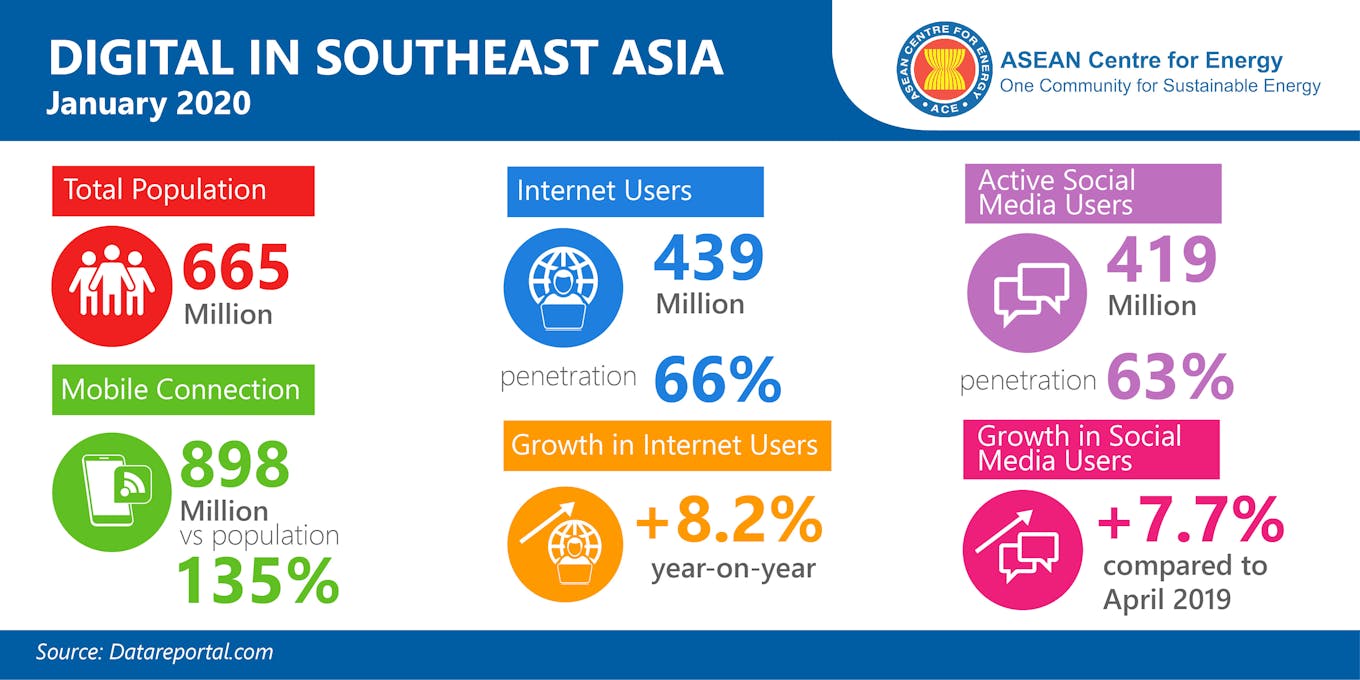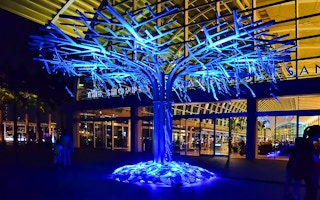Population growth has contributed to rising energy consumption around the world, and Southeast Asia has been no different. Between 2010 and 2018, the region’s energy demand rose by almost 22 per cent—an increase almost double the global average. With energy efficiency one of the most powerful tools to slash greenhouse gas emissions and maintain energy security, the bloc must nurture sustainable energy systems that conserve energy where possible.
To continue reading, subscribe to Eco‑Business.
There's something for everyone. We offer a range of subscription plans.
- Access our stories and receive our Insights Weekly newsletter with the free EB Member plan.
- Unlock unlimited access to our content and archive with EB Circle.
- Publish your content with EB Premium.
Demand-side measures that seek to save energy are deemed less costly than supply-side approaches, such as building more power plants or deploying renewables. Another benefit is that energy can be conserved by anyone, provided they are aware of the need to do so. This means public awareness is critical to reduce energy intensity.
Creative communication can be a key solution to elevate public commitment to energy savings at home, at work, or through less energy-intensive transportation. Campaigns that seek to encourage consumers to use less energy could include verbal messages, non-verbal signals, or a combination of both in interactive ways.
Policymakers and communities can tap the potential of digital technology to support awareness-raising campaigns. After all, the Association of Southeast Asian Nations (Asean) is home to around 439 million internet users and 419 million active social media users as of January 2020. These numbers suggest penetration rates as high as 66 per cent and 63 per cent, respectively. With the region’s growing adoption of information and communication technology, online media can effectively boost the outreach of talks, art, and campaigns.

Digital indicators in Southeast Asia. Source: DataReportal
Using social media to promote energy efficiency
Digitalisation could benefit energy conservation efforts. Video conferences, such as seminars and talk shows, has been evolving to engage interdisciplinary groups and more audiences, especially during the Covid-19 pandemic. For instance, the Jakarta-based Asean Centre for Energy (ACE), an energy think tank, has on average experienced a 500 per cent surge in attendances for its recent public webinars, compared to last year.
Social media could also help raise more awareness, educating consumers on the importance of their role in the energy conservation movement. Even small individual actions such as washing laundry in cold water, unplugging devices when not in use, and taking public transportation make a difference. Using the fame of online “influencers” concerned about environmental issues could further improve a campaign’s outreach.
Then there are podcasts, which have gained in popularity. Such discussions or monologues can creatively deliver lessons on measures that help bring down energy use, highlighting how such actions could directly benefit people through lower electricity bills.
Using art to convey ideas and invoke emotions
Energy conservation campaigns don’t have to be limited to the relaying of scientific information. Art can be used to explore such issues just as well, making it a powerful tool to foster responsible energy use.
Through visualisations, art can provide a personal experience of an abstract problem that not yet poses a direct threat. What will the world look like in the future if energy demand growth is not kept in check? How does rising energy use impact the environment and future generations? In March 2020, Cambodian and French artists collaborated to create an art exhibition on energy and the climate crisis, with artworks depicting human activities that threaten the lives of animals and plants. Such communication can transform people’s attitudes towards their environmental impacts, invoking their emotions through narrative art.
Another innovative concept has been brought to life by the annual i Light Singapore, a sustainable light art festival held in Marina Bay festival. This art installation used energy-efficient lights to promote the “Switch Off, Turn Up” campaign. The campaign urged citizens to switch off non-essential lighting and turn up air conditioning temperatures to conserve electricity at home.
Campaigns can transform behaviours
A campaign seeks to inform and drive behaviour changes via marketing and advertising techniques. Talks and art can be included in such campaigns. Southeast Asian nations can learn from European Union states that collaborated to launch a project titled 10ACTION. This initiative successfully involved 174,861 European citizens whom it educated on energy and sustainability issues through engaging activities such as games and competitions.
In the meantime, ACE is conducting the very first Asean Energy Youth Awards, encouraging youths to demonstrate their thoughts about energy efficiency through a poster, essay, or video. In this event, ACE, as the regional energy catalyst, connected with universities in the region to invite students to participate.
International environmental awareness days present an opportunity to create energy-related campaigns. When celebrating Earth Hour Day this year, for instance, Cambodia not only encouraged citizens to turn off the light but also recommended concrete steps to protect the planet through individual activities, such as cutting down the use of plastics. Meanwhile, Vietnam held a two-week youth voluntary social service to disseminate information on energy-saving measures through posters.
Public communication through talks, art, and campaigns, supported by digital technology, can be impactful in promoting energy conservation. Creative use of communication tools can help emphasise the need to cut energy use now, resulting in the enhancement of life quality in the future. No energy conservation is possible without communication. It is time to spread the word.
Rika Safrina is the information and communications technology and data research officer at the Asean Centre for Energy.
Nella Nabila is the Asean Centre for Energy’s communication officer.
Arumdari Nurgianti is the data visualisation officer at the Asean Centre for Energy.




















